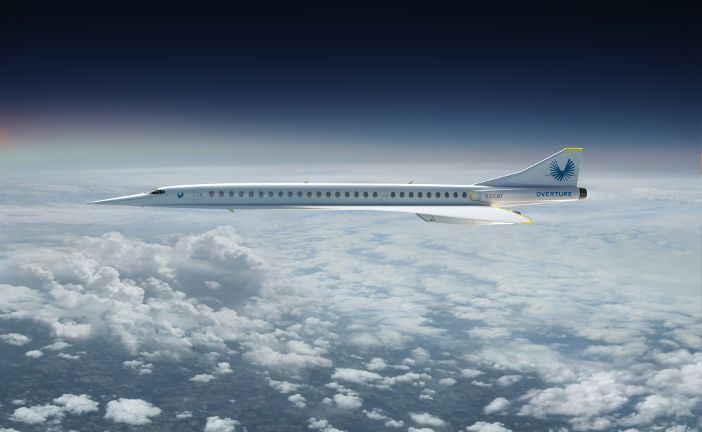Colorado, USA-based Boom Supersonic has confirmed plans to flight test a prototype of its Overture commercial airliner for the first time this year, after raising US$100 million in its latest funding round.
The 170 ft (52m) long delta-wing Overture will have a wingspan of 60 ft (18m) and seat 55 passengers. Boom plans for Overture to enter service in the mid-2020s.
Some 30 Overture aircraft have been pre-ordered by customers including Virgin Group and Japan Airlines.
Overture will have a cruise speed of Mach 2.2 and a range of 4,500 nautical miles. It will be powered by three non-afterburning, medium-bypass turbofan engines, two under the wings and one in the tail.
The engine, the details of which are yet to be released, will feature a variable geometry intake and exhaust, a technology that was used on Concorde to increase fuel efficiency and reduce noise. According to reports, Boom has approached engine suppliers about developing the new engine.
Boom said that Overture will be as quiet as a subsonic aircraft flying on the same routes.
The company is currently assembling XB-1, a third scale manned prototype of the Overture airliner, which it plans to fly for the first time “later this year”.
The XB-1 is to be powered by three GE J85 turbojet engines and will be piloted by Chief Test Pilot Bill “Doc” Shoemaker. The flight tests will demonstrate key technologies for mainstream supersonic flight, including the aircraft’s aerodynamics, composite materials and propulsion system.
Boom Supersonic is growing as it ramps up development. The company employs 100 people and plans to double in size during this year, it said.
To accommodate the assembly of XB-1 and development of Overture, the company has also recently relocated to a facility in Centennial, Colorado. The manufacturing site for Overture is yet to be chosen.
A total of more than US$141 million has now been invested in Boom. Blake Scholl, founder and CEO of Boom Supersonic said, “This funding allows us to advance work on Overture, the world’s first economically viable supersonic airliner.
“Today, the time and cost of long-distance travel prevent us from connecting with far-off people and places. Overture fares will be similar to today’s business class – widening horizons for tens of millions of travelers.
“Ultimately, our goal is to make high-speed flight affordable to all.”
Read our in-depth article about other supersonic airliners in development and their flight test programs, including NASA’s QueSST here.





